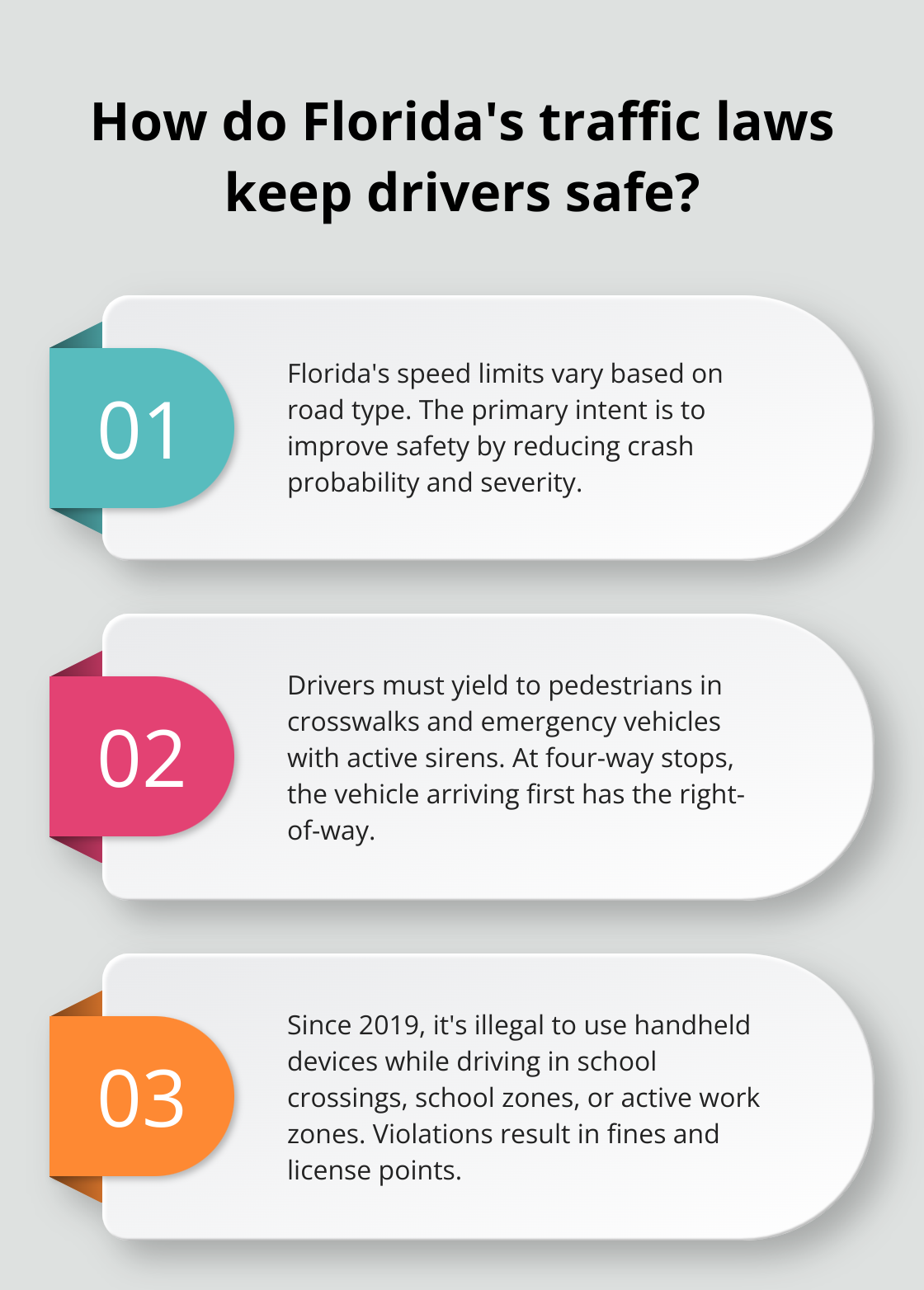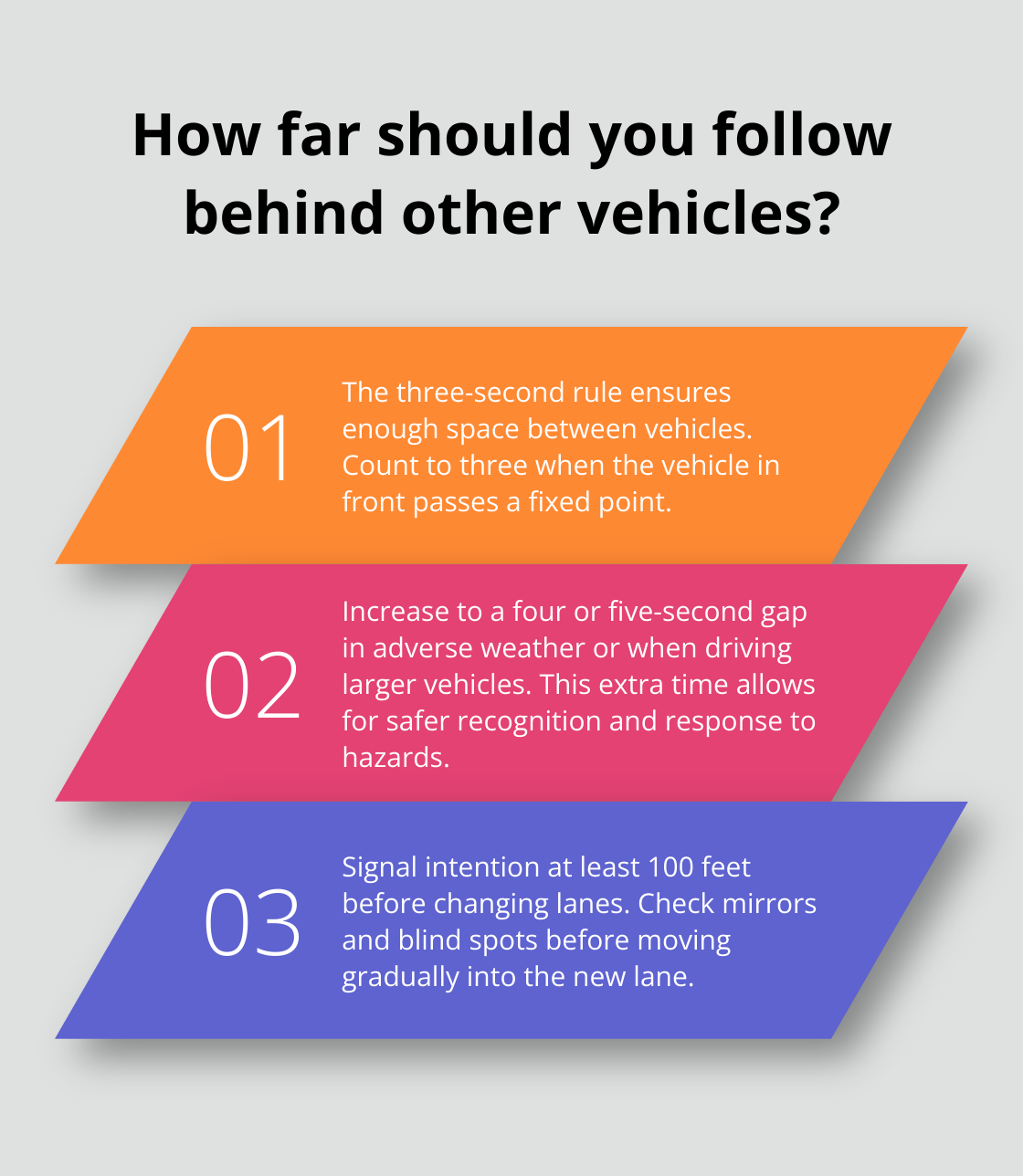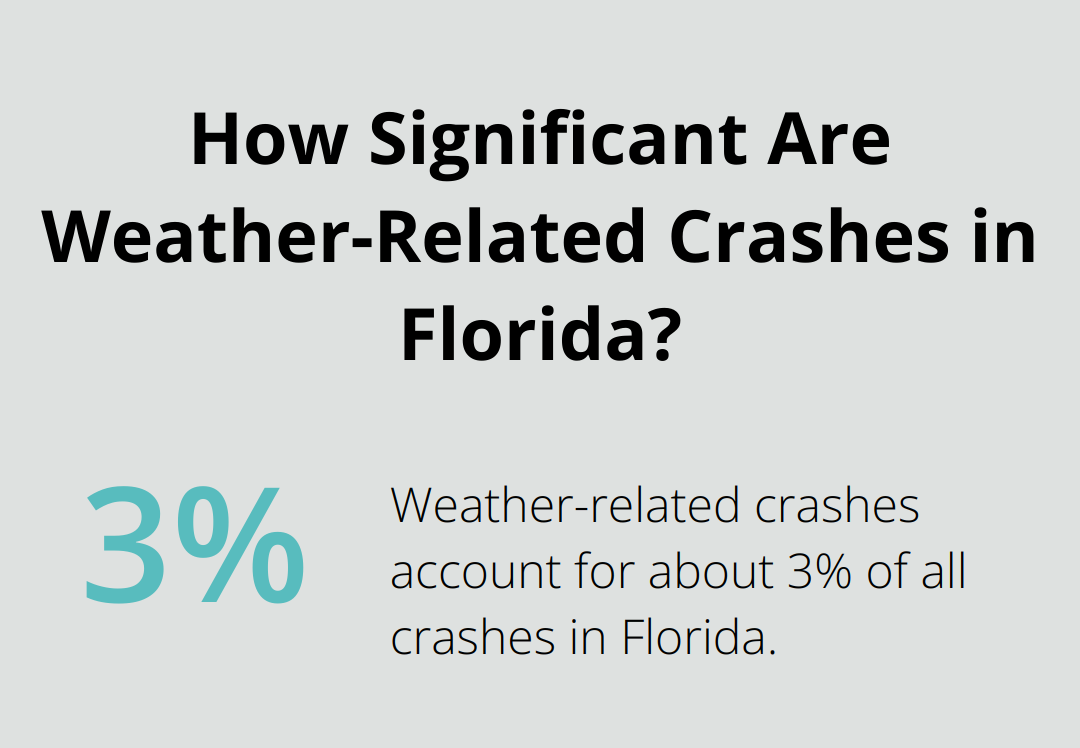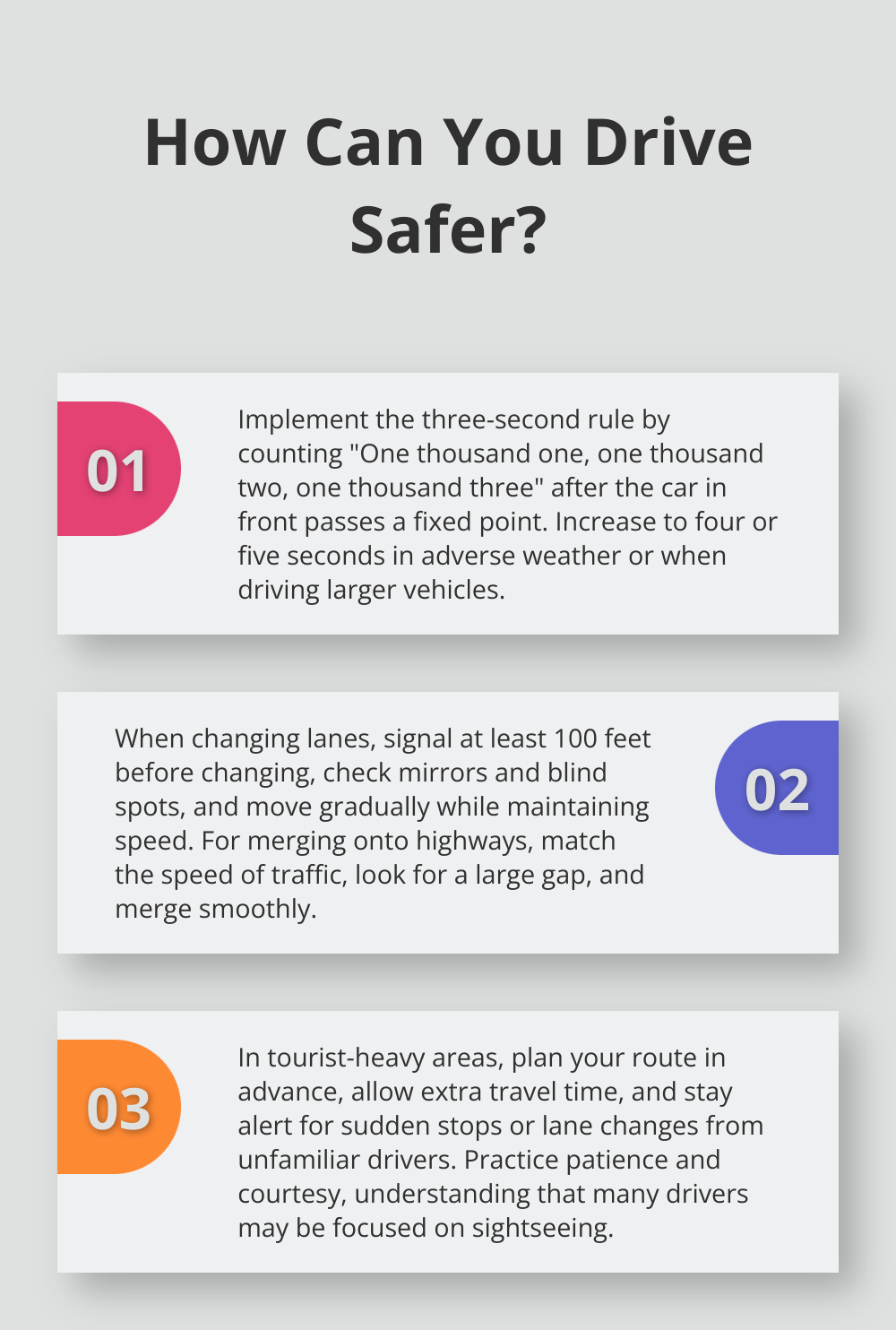How to Improve Your Driving Skills in Florida
Florida’s roads present unique challenges for drivers. From bustling tourist areas to unpredictable weather, mastering these conditions is essential for safe driving.
At The Wiser Driver Driving School, we’ve seen firsthand how proper training can transform average drivers into skilled road users. Our driving improvement courses in Florida are designed to equip you with the knowledge and techniques needed to navigate the Sunshine State’s diverse driving landscape.
This guide will walk you through key strategies to enhance your driving skills, ensuring you’re prepared for whatever Florida’s roads throw your way.
Understanding Florida’s Traffic Laws and Regulations
Florida’s traffic laws aim to keep drivers safe on the Sunshine State’s diverse roads. Let’s explore some of the most important regulations you need to know.
Speed Limits and Their Impact
Speed limits in Florida vary based on the type of road. The primary intent for establishing speed zones is to improve vehicular and pedestrian safety by reducing the probability and severity of crashes. These limits can change in construction zones, school areas, or other special circumstances.
Right-of-Way Rules
Understanding right-of-way rules prevents accidents. In Florida, drivers must yield to pedestrians in crosswalks and to emergency vehicles with active sirens. At four-way stops, the vehicle that arrives first has the right-of-way. If two vehicles arrive simultaneously, the one on the right goes first. These simple rules, when overlooked, can lead to dangerous situations.
Distracted Driving Laws
Florida enforces strict laws against distracted driving, particularly regarding cell phone use. Since 2019, it’s illegal to use a handheld device while driving in a designated school crossing, school zone, or active work zone. Violations result in fines and points on your license. The Florida Department of Highway Safety and Motor Vehicles has launched campaigns to educate motorists on the importance of avoiding distracted driving and inform them of current laws against distracted driving.
Traffic Signs and Signals
Florida uses standard traffic signs and signals that every driver should recognize. Red octagonal signs always mean stop, while yellow diamond-shaped signs warn of potential hazards ahead. Green signs provide directional information. Traffic signals follow the universal red, yellow, and green system, but Florida also uses flashing signals in some areas (a flashing red light is treated as a stop sign, while a flashing yellow light means proceed with caution).
Penalties for Traffic Violations
Violating traffic laws in Florida leads to serious consequences. Penalties often include fines, points on your license, and potential license suspension. For example, running a red light can result in a fine and points on your license. Accumulating too many points within a specific timeframe can lead to license suspension.

Understanding these laws forms the foundation of safe driving in Florida. As we move forward, we’ll explore how to apply this knowledge to master defensive driving techniques, which will further enhance your skills on the road.
How to Drive Defensively in Florida
Defensive driving forms the cornerstone of safe navigation on Florida’s diverse roads. Let’s explore key strategies to enhance your defensive driving skills.
The Three-Second Rule
Increasing the distance between you and the car ahead can help give you the time you need to recognize a hazard and respond safely. The three-second rule ensures enough space between vehicles:
- Select a fixed point ahead (e.g., a road sign or tree).
- When the vehicle in front passes that point, count: “One thousand one, one thousand two, one thousand three.”
- If you reach the fixed point before finishing the count, you follow too closely.

In adverse weather or when driving larger vehicles, increase this to a four or five-second gap.
Lane Changes and Merges
Proper lane usage and merging techniques promote smooth traffic flow and prevent accidents. When changing lanes:
- Signal your intention at least 100 feet before changing.
- Check mirrors and blind spots.
- Move into the new lane gradually, maintaining speed.
For merging, especially onto highways:
- Match the speed of highway traffic.
- Look for a sufficiently large gap to enter safely.
- Merge smoothly, adjusting speed as needed.
Hazard Anticipation and Reaction
Anticipation plays a key role in defensive driving. Stay alert and always be aware of your surroundings. Keep an eye on the behavior of other drivers and scan the road ahead for potential hazards, including:
- Erratic behavior from other drivers.
- Pedestrians, cyclists, and animals near the road.
- Weather conditions affecting road safety.
When you spot a potential hazard:
- Reduce your speed.
- Increase your following distance.
- Prepare for evasive action if necessary.
Adapting to Florida’s Unique Conditions
Florida’s roads present distinct challenges that require specific defensive driving strategies. These include:
- Heavy tourist traffic (especially in popular destinations).
- Sudden tropical storms and heavy rainfall.
- Glare from intense sunlight, particularly during sunrise and sunset.
Try to familiarize yourself with local traffic patterns and weather forecasts before embarking on your journey. This preparation allows you to adjust your driving style accordingly and stay one step ahead of potential hazards.
As we move forward, we’ll explore how to apply these defensive driving techniques to Florida’s unique driving conditions, including navigating tourist-heavy areas and handling extreme weather situations.
Mastering Florida’s Unique Road Challenges
Florida’s roads present a set of challenges that can test even the most experienced drivers. From dense tourist areas to sudden tropical downpours, drivers must adapt to these conditions for safe travel in the Sunshine State.
Navigating Tourist-Heavy Areas
Florida’s popularity as a tourist destination results in congested areas, especially during peak seasons. To navigate these busy zones effectively:
- Plan your route in advance and allow extra time for travel.
- Stay alert for sudden stops or lane changes from out-of-state drivers unfamiliar with the area.
- Practice patience and courtesy, understanding that many drivers may focus on sightseeing.

Visit Florida reports that the state welcomed 137.6 million visitors in 2022, underscoring the importance of preparation for tourist-related traffic challenges.
Tackling Florida’s Extreme Weather
Florida’s weather can change rapidly, presenting unique driving hazards. Here’s how to handle common weather-related challenges:
- Heavy Rain and Flooding: Reduce speed and increase following distance. If you can’t see the road ahead, pull over to a safe spot until visibility improves.
- Tropical Storms and Hurricanes: Stay informed about weather forecasts and evacuation routes. Avoid driving during severe weather unless absolutely necessary.
- Intense Sun Glare: Keep sunglasses handy and use your car’s sun visors. Exercise extra caution during sunrise and sunset when glare intensifies.
The Florida Department of Transportation reports that weather-related crashes account for about 3% of all crashes in the state (emphasizing the need for weather-aware driving).
Coastal and Beach Driving Tips
Florida’s extensive coastline means drivers often encounter beach and coastal roads. Here’s how to navigate these areas safely:
- Consider salt air’s corrosive effects on your vehicle. Regular washing and maintenance can prevent long-term damage.
- Watch for sand on the road, especially after storms. Sand can reduce traction, so adjust your speed accordingly.
- Look out for pedestrians and cyclists, who frequent scenic coastal routes.
- In areas where beach driving is permitted, follow posted signs and check tide schedules to avoid getting stuck.
Adapting to Local Traffic Patterns
Each region in Florida has its unique traffic patterns. Miami’s rush hour differs from Orlando’s theme park traffic. Try to:
- Research local traffic patterns before your trip.
- Use traffic apps (like Waze or Google Maps) to stay updated on real-time conditions.
- Adjust your travel times to avoid peak congestion periods when possible.
Dealing with Wildlife on the Road
Florida’s diverse wildlife can pose unexpected road hazards. To minimize risks:
- Stay vigilant, especially in rural areas or near wildlife crossings.
- Slow down if you spot animals near the road (they may dart out unexpectedly).
- Use high beams at night when appropriate to improve visibility.
Mastering these unique challenges will significantly improve your driving skills in Florida, ensuring a safer and more enjoyable experience on the state’s diverse roads.
Final Thoughts
Improving your driving skills in Florida requires dedication and practice. You must understand Florida’s traffic laws, master defensive driving techniques, and navigate the state’s unique challenges. These efforts will transform you into a safer and more confident driver on Florida’s diverse roads.

Continuous learning plays a vital role in maintaining and enhancing your driving abilities. You should stay informed about changes in traffic laws and review defensive driving strategies regularly. We at The Wiser Driver Driving School offer comprehensive driving improvement courses in Florida to help drivers of all experience levels enhance their skills.
Our expert instructors provide state-required classes, personalized lessons, and defensive driving courses. We strive to help you become a wiser, safer driver on Florida’s roads. Your investment in driving skills protects you and contributes to the safety of everyone on the road.



